Earth Day celebrations, and springtime in general, are a great time to be thankful for the abundance of natural resources that surround us in Western North Carolina. But as we begin enjoying our springtime hikes, picnics and quiet moments in the sun, it’s important to remember that keeping our environment beautiful requires stewardship and mindfulness that extend beyond Earth Day cleanups and block parties.
When we look at sustainability in our region, it seems WNC has come a long way in the past few decades. Efforts have been made to cleanup our water, our air and our soil, and improve our social sustainability through increased access to food, transportation, green spaces and more. But while it’s good to celebrate how far we’ve come, it’s also good to look at how far we’ve yet to go. Xpress asked local nonprofits and regulatory agencies to take a hard look at our region — from our successes to our failures — and tell us how we’re doing, so that as we head into Earth Day 2015 we can strengthen our conversation on how we can be a more resilient, more sustainable community.
Air quality in WNC: D+
It’s impossible to be definitive in reporting about air quality anywhere, including in WNC. We depend on data received from narrowly defined and sparsely located air quality monitoring stations in the Great Smoky Mountains National Park that give us some indications on levels of the major air pollutants sulfur dioxide and nitrogen oxide. This may indicate trends in the region, but it doesn’t necessarily provide accurate information for specific locations in WNC where there are no monitoring stations. Further confusing the picture is the variations in climatic circumstances and seasonal weather patterns. For instance, in the past five years we’ve had higher-than-normal rainfall in the summer (the height of the ozone season) that has helped lower ground-level ozone concentrations.
Nonetheless, the trend appears to be toward improvement in air quality, attributable to a flurry of legislative, regulatory and economic activity from the year 2000 to the present. The NC Clean Smokestacks Act, passed in 2002, reduced sulfur dioxide and nitrogen oxide emissions from public utility-owned coal plants by 73 percent and 78 percent respectively, throughout most of North Carolina and resulted in a lawsuit against the Tennessee Valley Authority that compelled it to shut down or add emission controls to coal plants that seriously impact our air.
The Clean Air Interstate Rule, reimplemented in 2009 after an earlier judicial setback, promises to have a positive impact on our air here in WNC. The general trend of replacing old coal plants with new natural gas-fired power plants may have some short-term positive impact on sulfur dioxide and nitrogen oxide emissions, but not on carbon dioxide emissions and other greenhouse gases that are also a form of air pollution. The only real way to eliminate air pollution is to use less energy and transition to nonpolluting technologies that don’t use combustion, such as solar and wind. So it’s a mixed bag.
It will be decades before we know, definitively, the net result of all this activity on the air quality of our region, but it stands to reason that by limiting pollution at the sources, our air quality will gradually improve. Currently, however, we still have limited visibility far below the natural level in the Great Smoky Mountains National Park, ozone pollution and asthma rates among our children have not abated, and mercury concentrations in the aquatic wildlife of our fresh water lakes and rivers are still rising. Is this a healthy place to live in terms of air quality?
— Avram Friedman, executive director of the Canary Coalition
Asheville’s carbon footprint: B+/A-
The city of Asheville has managed an impressive 27 percent reduction in its carbon footprint of municipal operations since the 2008 baseline. It has achieved this through alternative fuel vehicle technology, LED streetlights, employee engagement and better operations and maintenance of its facilities.
However, the need for improvement remains. After the low-hanging fruit has been picked, the next carbon reductions will be much harder. The city must figure out how to integrate electric vehicles into its fleet and how to incorporate renewable energy into its reduction strategy. Eventually, the city may choose to extend the goal beyond the government organization and lead a communitywide carbon footprint reduction effort as well.
— Kerby Smithson, interim sustainability officer for the city of Asheville
Biking infrastructure in Asheville: C
Since the passing of Asheville’s Bicycle Comprehensive Plan in 2008, the city has prioritized the implementation of bicycle infrastructure and has made steady progress as indicated by the expansion of greenways, the striping of several bike lanes, the inclusion of sharrow markers and wayfinding signs, increased participation in community rides, bicycle corrals and education programs. In 2012 Asheville earned bronze status from the League of American Cyclists as a bicycle-friendly city.
Most recently, a protected bicycle lane was included in the River Arts District Transportation Improvement Plan and the city is working to install on-street bike parking on Haywood Road this summer. Asheville has demonstrated a reliable commitment to developing as a bicycle-friendly community. Progress has been made, but there is much more progress to make.
Asheville city government’s budget is tight and there is only so much the city can do on its own. Although the N.C. Department of Transportation enacted a Complete Streets Policy, recent legislation prohibits the state from matching funds for bicycle and pedestrian improvements. The Strategic Transportation Investment Law curtails future expansion of bicycle and pedestrian infrastructure, greatly impacting Asheville’s future success as a bike-friendly community.
Our community is passionate about advancing bicycle infrastructure and it will take continued support and investment from all aspects of the community to build a robust bicycle system. We’re moving in the right direction, but we’re far from being a leading city.
— Mike Sule, executive director at Asheville on Bikes
Environmental stewardship in Asheville: B
A+ for volunteering: Asheville GreenWorks worked with nearly 3,000 volunteers in 2014 through 196 projects. When you need something done in Asheville, turn to the volunteers. They’re the first ones to roll up their sleeves.
D- for litter: Our beautiful mountain town continues to struggle with roadside and river-borne trash. The No. 1 source of roadside litter in our area is when you can’t wait to throw that item away until your next stop and out the window it goes. But hey, it’s not like we don’t have recycling and waste containers everywhere! Gas stations, restaurants, shopping centers, parks, grocery stores, not to mention your own home — there’s always a place to properly dispose of your items. Accidental littering is also being created by unsecured trash from commercial haulers and residents. How can you help? The next time you’re filling up your trash bin, make sure that all of the items in your can are bagged.
A+ for recycling and composting: Holy smokes we love our recycling! Since the city of Asheville rolled out Big Blue in 2012, recycling jumped 87 percent over 2011. Nine schools in the area have made the switch to 100 percent commercial composting saving the taxpayers money and teaching the next generation about waste.
— Eric Bradford, volunteering coordinator at Asheville GreenWorks
Food security in Asheville: C- / food security in Buncombe County: B+
The Asheville metro area has some the highest levels of food insecurity in the nation, meaning food insecurity or food hardship are an important piece of sustainability in our community. We are excited about the city’s efforts with the Azalea Road Park area where it is providing a lease of city-owned land for an organic farm and composting facility. We are seeing a revival of interest in food security through the volunteer sustainability committee, SACEE, which is starting to work closer with us in assessing the city’s progress toward the Food Action Plan (adopted in 2013).
We feel there is much more work to be done in comparison to other cities across the U.S. and would like to see funding made more of a priority around food security/food access (i.e. community gardens, public transportation, edibles in parks and greenways) . We encourage the city of Asheville to: look at our neighbors in Black Mountain and their success in maintaining a staff gardener, community gardens and a seed bank; ensure all Asheville City Schools participate in Appalachian Sustainable Agriculture Project’s Farm to School Program; allocate funding and authorization for edibles in city parks and greenways; and allocate staff hours for the new sustainability coordinator to work toward food security matters. Although the city has passed legislation, it has taken very little action towards those words. City-owned property is not yet a welcome place for edible plantings, and at this point, most all work being done toward food security in the city is from volunteers.
Buncombe County allocates resources such as funding and staffing for farmland preservation and hosts the Agricultural Advisory Board for Farmland Preservation. While a county agriculture extension agent is par for the course in most counties, Buncombe County goes above and beyond in its duties, working with the Asheville-Buncombe Food Policy Council and other organizations to establish baselines and metrics to track our progress in lessening food hardship. The county has been very supportive of community gardens and edible plantings on its property (i.e. the Sand Hill Community Garden). Last year the county funded 17 community gardens (eight new and nine expansions) totaling more than $38,000. Buncombe County Schools participate in the N.C. Farm to School program. Overall, the county has shown a commitment toward decreasing food hardship and supporting farmers in their work.
— The Asheville-Buncombe Food Policy Council
Land conservation in WNC: B-
For many decades real estate development in the mountains was a primary driver of WNC’s economy. By the time of the 2008 economic collapse, that trend had become unsustainable. Many places that should never have been considered for development —the steep, rural and remote parts of the region — were being fragmented with roads, subdivided and sold. In many cases, buyers never intended to reside on these remote lots but acquired them as a speculative investment.
The economic downturn changed all that overnight. Ironically, at the same time the economy collapsed, government revenues also plunged. State conservation trust funds were slashed and tax credit programs were eliminated. However, since 2006, the 10-member organizations of Blue Ridge Forever have saved more than 70,000 acres and some of the region’s most outstanding places. Counties such as Buncombe, Haywood and Transylvania have helped offset reduced state funding with local programs to assist conservation landowners.
As the real estate market begins to rebound, state and local officials must invest once again in conservation funding, restore tax incentives and implement reasonable development controls so that we can avoid the type of inappropriate development seen too often in past decades and conserve the natural resource assets upon which the region’s economic future will depend.
— Kieran Roe, executive director at Carolina Mountain Land Conservancy
Protecting our pollinators in Asheville: A-
No one knew exactly what the certification to become the inaugural Bee City USA would entail back in 2012, so our city staff and council took a bold leap of faith. Now there are six certified cities in North Carolina, Oregon and Kentucky with many more in the process of applying.
Though Asheville gets an A+ for taking that initiative and our community has embraced pollinator stewardship by choosing native plants and using fewer pesticides, Asheville could look to other certified cities and applicants for additional ideas. For example, for decades Carrboro, N.C., has managed its city property using a “least toxic integrated pest management” policy. The city goes so far as to spray weeds with steam — using a special machine mounted on the back of a truck — rather than herbicides. When Talent, Ore., discovered a beehive tangled in power lines, city staff built a box with an observation window in it, collaborated with the local power company to rescue the colony and put the hive in a public place where people could see the bees at work. Now the city manager is adding two more Bee City USA signs and planting pollinator patches in prominent places around city buildings.
Here are some ideas of what Asheville could do to become a grade A pollinator-friendly city: recommend only native trees and shrubs on city property and to developers because native pollinators have a symbiotic relationship with the plants with which they co-evolved over millions of years; plant native meadows along greenways, rather than grass; and adopt a least toxic integrated pest management policy for city property.
—Phyllis Stiles, director of Bee City USA
Solar awareness in WNC: B+
Not long ago, rooftop solar was a dormant market in WNC, largely the province of do-gooders and off-grid enthusiasts. But over the past five years, favorable policies and community-based initiatives have changed that.
Today WNC is one of the hottest residential solar markets in the state because of programs like Solarize and Clean Energy for WNC. These programs made it cheaper and easier than ever for customers to go solar, and every week a new homeowner in WNC is doing just that. In the last 1 1/2 years, the Clean Energy for Us initiative has helped 80 homeowners install solar panels in WNC — 11 times more than what resulted from the same program in Raleigh.
Commercial and utility-scale markets have been less promising, and traditional energy monopolies continue to push for policies that would kill the solar industry in North Carolina. However, Clean Energy for Us believes that our region’s unique sense of self-reliance makes us well-situated to continue growing our clean energy economy for years to come.
— Katie Bray, program director at Clean Energy for Us
Water quality in the French Broad River: B-
The French Broad River is an amazing success story. The river was once said to be ‘too thick to drink and too thin to plow,’ but thanks to the Clean Water Act and the work of thousands of concerned citizens, business owners and government officials, the French Broad River is now a thriving recreation destination.
Gone are the days when millions of gallons of raw sewage and industrial waste were intentionally dumped into the river. But we still face challenges from sediment pollution, poor land-use practices, bacteria pollution and the legacy of old hazardous waste sites.
The French Broad Riverkeeper monitors bacteria pollution in the river on a weekly basis at more than 20 locations around the watershed and posts that data at swimguide.org and on the mobile app named swim guide. This data shows that the river is safe for swimming more than 75 percent of the time, but pollution levels do rise after a moderate to heavy rain event. We can all help clean up the river to make sure it finally reaches the full goals of the Clean Water Act to be fishable and swimmable all of the time. Volunteering opportunities are posted at mountaintrue.org.
— Hartwell Carson, French Broad RiverKeeper at Mountain True




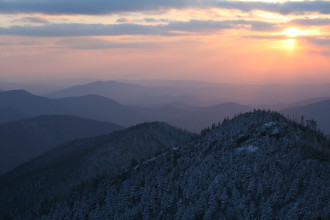
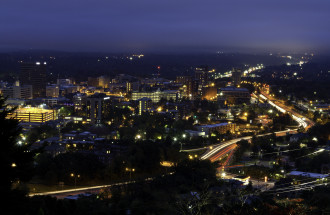
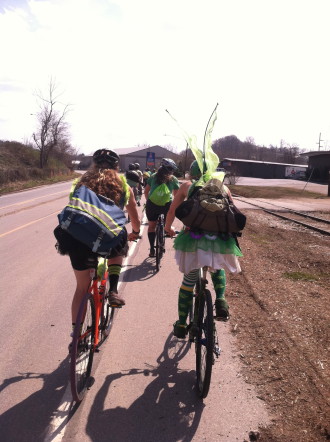
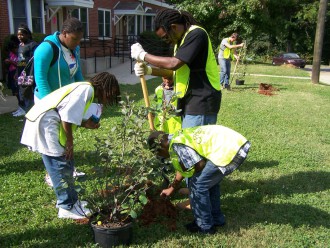

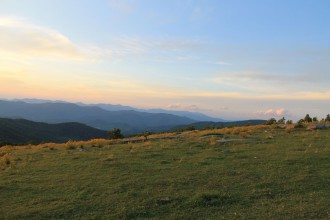
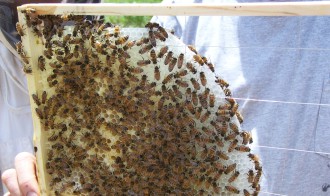

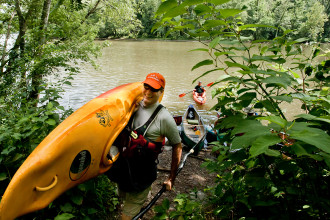
We will not be sustainable without green building. Buildings account for 40% of greenhouse gas emissions and a lot or resource use. Green building addresses both and our area has a healthy green building program , Green Built NC with over 1000 certified homes to date. (http://www.wncgbc.org/programs/green-built). Also many homes that are LEED Certified (http://www.wncgbc.org/programs/leed-for-homes ) and many that are at least Energy Star certified. Some of these reach the level of zero energy or buildings that produce as much renewable energy in a year as they consume. The WNC Green Building Council has been working for a more sustainable future since 2000. http://www.wncgbc.org/